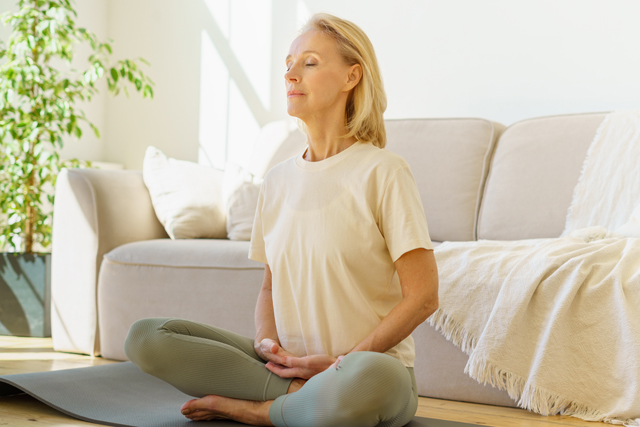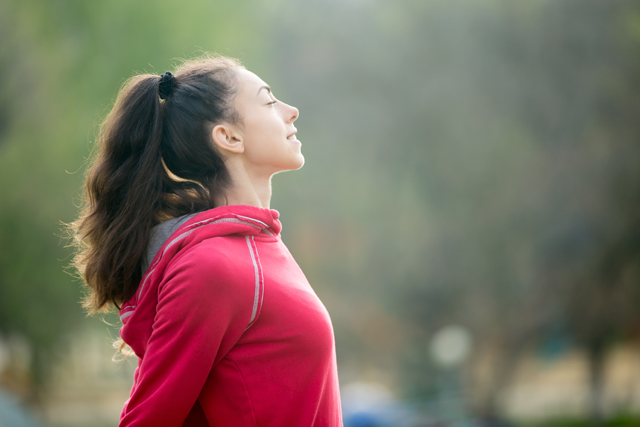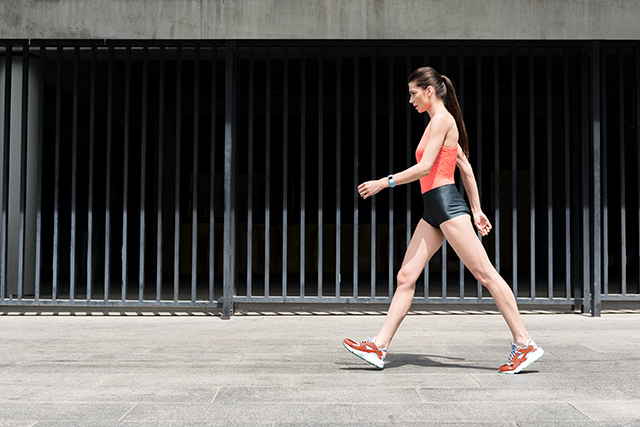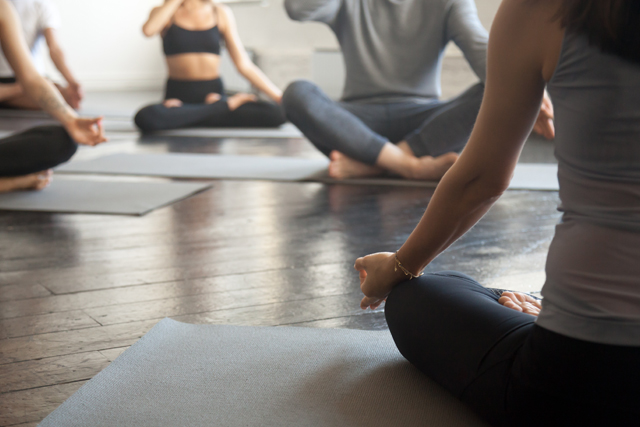Multitasking is a big part of life these days. Between work, taking care of kids or people, errands, household chores, and more, you may rarely stop and take a breath. But focusing on your breathing is crucial for health. Breathwork, or intentional breathing, can help calm your system down during stress or anxiety. Keep reading to learn more about the benefits of breathwalking.
Walking has a similar effect. Not only is it good for your cardiovascular health, but going for a short or long walk can help reduce stress, improve your mood, and increase your energy level. While it’s easy to throw on a pair of headphones and listen to music, a podcast, or an audiobook, consider concentrating on your breath.
Breathwalking is a mindful exercise that combines yoga breathing exercises and walking. Adapted from Kundalini yoga, breathwalking helps calm your sympathetic system (“fight-or-flight” reaction) while boosting your overall health. When done regularly, this meditative exercise has significant health benefits.
What Is Breathwork?

Controlled breathing therapies can activate the parasympathetic system, the part of your autonomic nervous system that controls your heart rate and blood pressure, signaling relaxation. Breathing techniques have roots in spiritual or religious purposes. In the last few decades, breathwork has become part of an integrative medicine approach that treats a person’s mental and physical health. Breathwork control techniques include:
- Pursed Lip Breathing – inhaling through the nose for two counts, then slowly exhaling through pursed lips for a count of four.
- Breath Focus Technique – visualize words such as relax, peace, or let go while inhaling and imagine releasing negative thoughts, stressors, and anger while exhaling.
- Diaphragmatic or belly breathing – with one hand on your upper chest and the other below your rib cage, breathe in through your nose, tighten your stomach muscles, and breathe out through pursed lips. The hand on your upper chest stays still while the hand on your stomach rises and falls.
- Box Breathing – breathe in through your nose for four counts, hold onto your breath for four counts, then slowly release for four counts.
Benefits of Breathwork
Cortisol is a hormone that controls your body’s stress response and several other cardiovascular events. In a 2017 study, breathwork effectively lowered cortisol levels in the moment, and some participants maintained low cortisol levels well after the exercise. When done properly, breathwork benefits include:
- Managing symptoms of stress, anxiety, depression, and even PTSD
- Reduced blood pressure, heart rate, and increased oxygen levels
- Relax tense muscles and even relieve chronic pain
- Boost immunity
Work With a Breathwork Coach
Fortunately, you don’t have to do breathwork alone. A breathing coach can help you identify the techniques that work best for you. Whether in-person or through telehealth, they can ensure you correctly perform the breathing exercises. Heally has several trained breathwork coaches and appointment times that accommodate all busy schedules.
Benefits of Walking 30-Minutes a Day?
Like breathwork, walking is excellent for heart and mental health. A sedentary lifestyle can trigger various issues like diabetes, cardiovascular disease, and metabolic syndrome. Walking also:
- Burns calories
- Boosts immunity
- Relieves joint pain
- Increases your energy level
Research shows that 30 minutes of physical activity five days a week may prevent one in twelve deaths and one in twenty cases of cardiovascular disease. Keep in mind this is continuous walking activity, not just movement at work or doing household chores.
Mental Health and Walking
When you head out for a walk, how do you feel? You may feel happy because you’re doing something good for your body and proud that you set a goal and are now achieving it—both of these impact your mental health.
As recently as 2021, researchers found that 750 minutes a week of leisurely walking improved mental health, decreasing feelings of psychosomatic symptoms of loneliness, social isolation, and depression that come with diminished mental health. So you don’t have to walk fast or at a high intensity. You just have to move!
Breathwalking for Your Health

The goal of breathwalking is to mindfully synchronize your movement with your breathing. When your physical activity or stress increases, your breaths per minute (respiratory rate) and volume of air per breath (tidal volume) also increase. High intensity or high stress can cause your breathing to become erratic, raising your heart rate and blood pressure simultaneously. By paying attention to your breathing, you can activate your parasympathetic system to calm or control these responses but also maintain a high tidal volume.
Benefits of Breathwalking
Similar to its namesakes, breathwalking helps balance our mental and physical health. There are benefits to five areas of our health:
- Heart rhythm
- Visual focus
- Muscle balance
- Brain activity
- Changes in mood or thoughts
Breathwalking has been shown to increase your energy levels, relaxation, and feelings of connectedness and helps with mood control and mental clarity. You also tap into your cardiovascular system and, with every breath, improve oxygen flow to your cells and your brain. Plus, it’s easier to do than you think.
How Do You Breathwalk?
There is a five-step method to breathwalking. Sometimes it can take up to an hour, but you can walk longer or shorter depending on your time.
- Awaken – Begin the walk by refreshing your muscles with simple exercises for your arms, posture, and breathing, including taking full conscious breaths, breathing deeply, or inhaling passively and exhaling quickly (sort of like panting)/
- Align – As you walk, pay attention to your body, starting with your foot. Focus on each part of your body for a moment and notice how each aligns with the whole as you move up.
- Vitalize – Increase your pace and clear your mind, matching your walking cadence with your breath. Breathe only through your nose, with rhythmic breaths for three to five minutes, while breathing normally for three minutes in between.
- Balance – Slow your pace gradually and pay attention to your breathing as your body calms down. During this cool down, you want to notice your surroundings and set your intentions for the day.
- Integrate – While stretching, connect with your body. Like an “inner walk,” show appreciation for your muscles and ability to perform the exercises.
Make Breathwalking Part of Your Routine
Yoga can seem complicated or slow, but breathwalking is an accessible way to engage your breath, movement, and mind. Anyone can learn how to breathwalk. It’s a great lunchtime exercise during working hours, a way to start or finish your day, or performed as part of your fitness routine on “off” days. Make an appointment to talk with a Heally integrative medicine physician or connect with a breathing coach.


